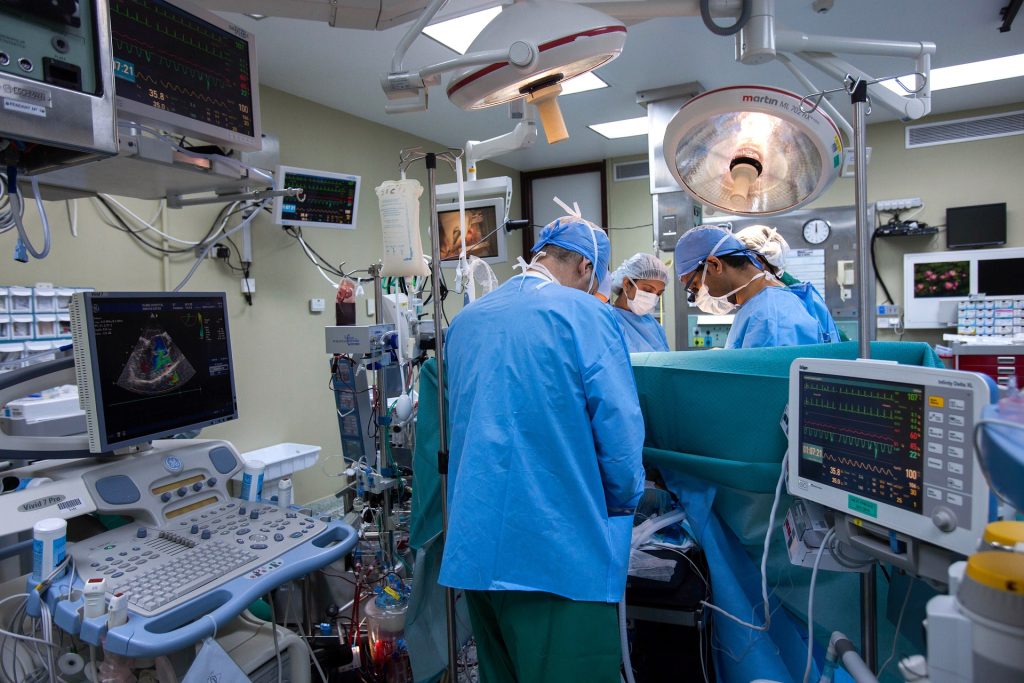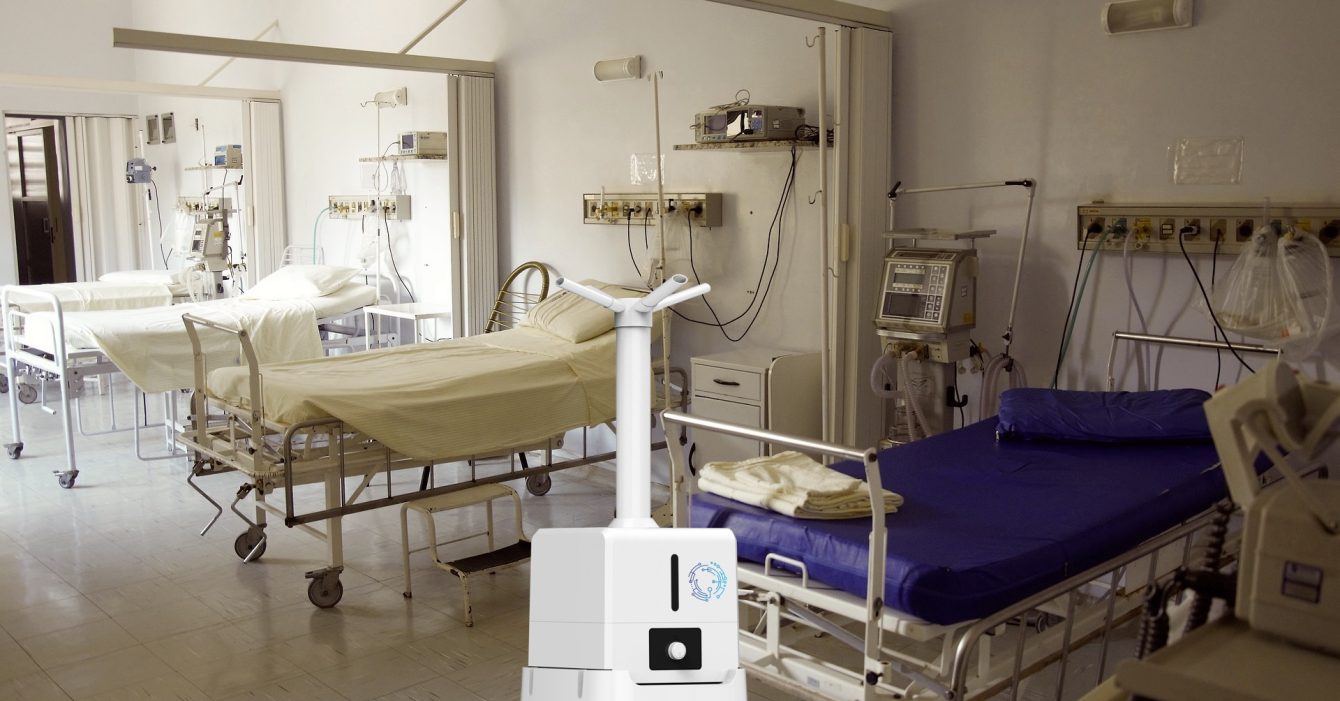The COVID-19 pandemic imposed an increasing demand for service robots as a substitute for humans to conduct various types of work in contaminated areas. Such work includes logistics, patient care, and disinfection, which can reduce the risk of human exposure to the highly contagious and deadly viruses. Since late 2019, the outbreak of novel coronavirus disease (COVID-19) has become a worldwide pandemic, which brought huge pressure to the public healthcare system worldwide. By 4 March 2021, a total of 114,428,211 confirmed cases and 2,543,755 deaths with 348,281 daily increases in new cases were reported by World Health Organization. Due to supply constraints and virus variants, one of the key measures to control the spread of COVID-19 and other contagious diseases (Hospital-associated Infections HAI or nosocomial infections) is to prevent normal people from getting infected, for example, reducing unnecessary interpersonal communication (also known as social distancing), terminal disinfection, and isolation of infection are effective actions. Such approaches have been accepted by most countries worldwide and have shown the desired effect in restricting the escalation of both infection and asymptomatic infection cases.
From a technical point of view, Robots have been classified in the literature as one of the ways of overcoming the challenges of the pandemic. It has been found that, overall, robotic systems are overall apt solutions for dealing with many problems caused by COVID-19 & nosocomial infections. These include diagnosis, screening, disinfection, surgery, tele-healthcare, logistics, manufacturing, and broader interpersonal problems unique to the lockdowns.
Nosocomial Infections are Underreported and likely underdiagnosed worldwide.
Nosocomial infections, also known as hospital-acquired infections (HAIs), are a serious problem in hospitals worldwide. These infections are acquired by patients during their stay in hospitals, clinics, or other healthcare facilities, and they can be caused by a variety of microorganisms, including bacteria, viruses, and fungi.
According to the World Health Organization (WHO), HAIs affect millions of patients worldwide each year, and they can result in prolonged hospital stays, disability, and even death. In some cases, HAIs can also lead to increased healthcare costs and a significant burden on healthcare systems. The problem of HAIs is particularly concerning because many of these infections are caused by bacteria that are resistant to multiple antibiotics, making them difficult to treat. This has led to the emergence of so-called “superbugs,” which pose a significant threat to public health.


Preventing and controlling the spread of HAIs is a major challenge for healthcare providers and requires a multi-faceted approach that includes infection control measures, appropriate use of antibiotics, and patient education. It is crucial that healthcare providers remain vigilant in their efforts to prevent and control HAIs to ensure the safety and well-being of their patients.
The exact number of deaths due to nosocomial infections (hospital-acquired infections) is difficult to estimate, as it can vary greatly depending on the location and healthcare setting. However, according to the World Health Organization (WHO), millions of patients are affected by HAIs worldwide each year, and it is estimated that they cause hundreds of thousands of deaths annually.
In the United States, the Centers for Disease Control and Prevention (CDC) estimates that approximately 1 in 31 hospital patients has at least one HAI, resulting in tens of thousands of deaths each year. However, it is important to note that not all HAIs are fatal, and many can be successfully treated with appropriate medical care.
It is important to note that the actual number of deaths due to HAIs may be higher than reported, as some cases may go undiagnosed or be misclassified as other causes of death. This underscores the importance of ongoing efforts to prevent and control HAIs in healthcare settings.
The estimated yearly costs for fighting nosocomial infections (hospital-acquired infections) can vary widely depending on the country, healthcare setting, and the specific infection control measures implemented. However, it is widely recognized that HAIs can lead to significant healthcare costs due to prolonged hospital stays, additional medical procedures, and increased use of antibiotics.
In the United States, for example, the Centers for Disease Control and Prevention (CDC) estimates that HAIs result in approximately $9.8 billion in additional healthcare costs annually. This includes both direct costs, such as additional medical care and medications, as well as indirect costs, such as lost productivity and increased disability.
Similarly, in the United Kingdom, it is estimated that HAIs cost the National Health Service (NHS) approximately £1 billion per year. This includes the cost of additional medical care and treatment, as well as the cost of implementing infection control measures to prevent and control the spread of HAIs.
Overall, the costs of HAIs can be substantial, both in terms of healthcare costs and the human toll on patients and their families. This highlights the importance of ongoing efforts to prevent and control HAIs in healthcare settings, including the appropriate use of antibiotics, infection control measures, and patient education.
Results
Today, out of every 100 patients in acute-care hospitals, 7 patients in high-income countries and 15 patients in low- and middle-income countries will acquire at least one health care-associated infection (HAI) during their hospital stay. On average, 1 in every 10 affected patients will die from their HAI (as per the first HAI study byWHO in 2022).
The impact of healthcare associated infections and antimicrobial resistance on people’s lives is incalculable. Over 24% of patients affected by health care-associated sepsis and 52.3% of those patients treated in an intensive care unit die each year. Deaths are increased two to threefold when infections are resistant to antimicrobials.
- 4 out of 106 WHO assessed countries (3.8%) had all minimum requirements for Infection Prevention and Control (IPC) in place at the national level
- Only 15.2% of health care facilities meeting all of the IPC minimum requirements, according to a WHO survey in 2019
- Approximately 25-30% of ICU patients in high-income countries experience at least one HAI episode
- Romania's "bacteriological bombs" (Belgian specialists described the Colectiv victims that had been transferred to the Queen Astrid Hospital)









